Explore Okavango Delta - Botswana Travel, Africa
The Okavango Delta is a mesmerizing oasis located in the heart of Botswana, offering travelers an unmatched experience of raw, untamed wilderness. Unlike any other place in Africa, it is one of the world’s largest inland deltas, spreading over 15,000 square kilometers. Famous for its crystal-clear waterways, lush vegetation, and incredible wildlife, the Okavango Delta is a true wonder of nature. It is recognized as a UNESCO World Heritage Site and has become a bucket-list destination for adventurers, nature lovers, and safari enthusiasts alike.
Population: Unrecorded number due to the untouched natural environment. This region consists of mostly wildlife preservation centers and ethnic tribes in remote areas.
Economy: The Okavango Delta's economy largely relies on tourism, driven by its unique wildlife and natural beauty, alongside traditional agriculture and local crafts that support the region's communities.
Landmarks: Famous for the Chief’s Island, Moremi Game Reserve, and Tsodilo Hills.
Botswana
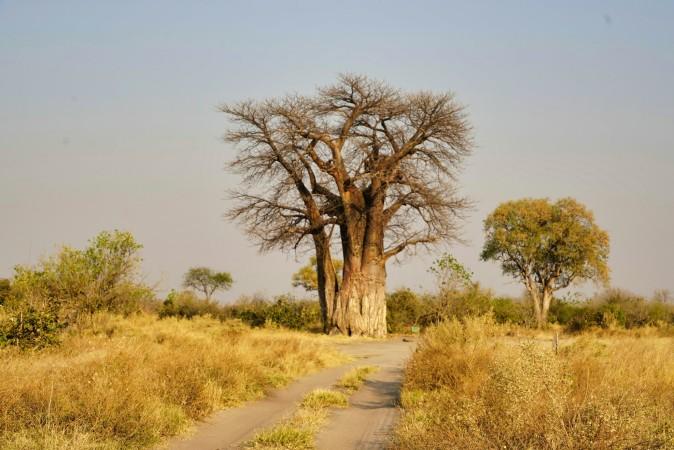
Overview of Okavango Delta
History & Cultural Influence
The history of the Okavango Delta is deeply intertwined with the lives of its indigenous people. Thousands of years ago, the land was inhabited by the San Bushmen, who lived off the land as hunter-gatherers. Today, the local tribes, such as the BaYei and Hambukushu, continue to call the Delta home, bringing with them fishing techniques that still play a vital role in the local economy. The influence of these tribes is evident in the Delta’s cultural heritage with many age-old traditions passed down through generations. The Okavango Delta isn’t just a wildlife haven; it’s a living cultural mosaic where history is still being written.
Interaction with the Locals
The population in the Okavango Delta region is relatively small, with most residents belonging to indigenous groups such as the BaYei, Hambukushu, and San people. These communities have lived in harmony with the Delta’s environment for generations, practicing traditional ways of life like fishing, farming, and basket weaving. The BaYei, in particular, are known for their mokoro (dugout canoe) skills, which play a significant role in local transportation and tourism. The people of the Delta are known for their warmth and hospitality, often welcoming visitors to experience their rich cultural heritage.
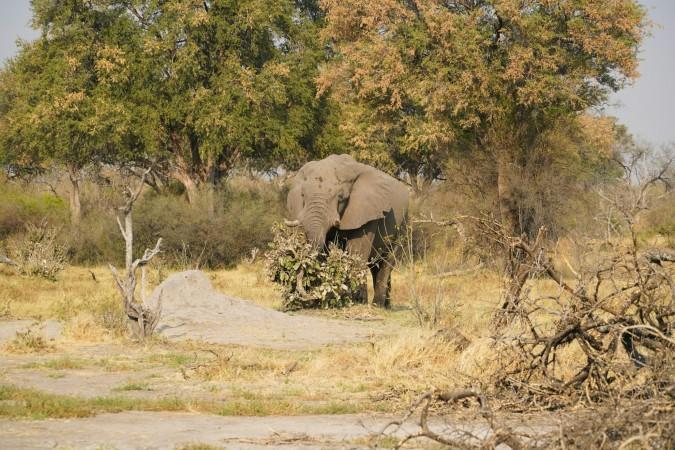
Okavango Delta, home of a diversity number of animals and floral - © Datingjungle
Top Attractions in Okavango Delta
The Okavango Delta offers a wide range of breathtaking attractions, each more awe-inspiring than the last. These must-visit sites, combined with the Okavango Delta’s natural beauty, make this region a should-not-miss destination for anyone looking to explore Botswana's untouched nature.
Chief’s Island
Chief’s Island is the largest landmass within the Okavango Delta and is widely regarded as the premier destination for wildlife viewing. As part of the Moremi Game Reserve, it offers the opportunity to see some of Africa’s most iconic animals, including lions, elephants, and leopards. Game drives here are exceptional, and the island’s varied habitats, from floodplains to savannas, attract a diverse range of wildlife.
Moremi Game Reserve
Situated on the eastern side of the Okavango Delta, the Moremi Game Reserve is a must-visit for any traveler. It was the first reserve to be set aside by local tribes in 1963 to protect the wildlife in their ancestral lands. Moremi’s scenic beauty, combined with its rich diversity of animals, including rare species like the African wild dog, makes it a top attraction.
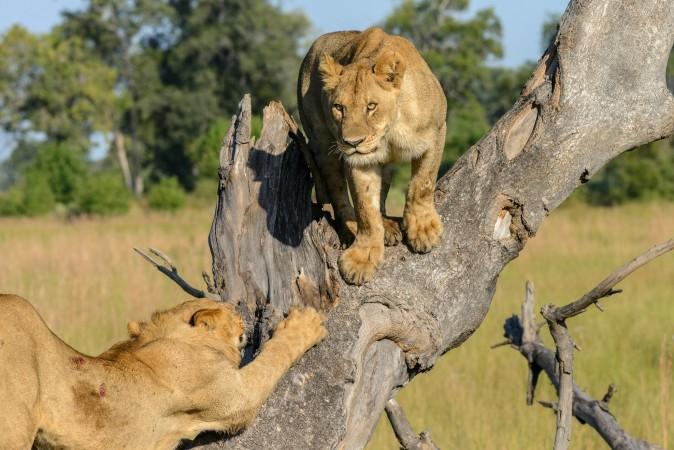
Lionesses in Moremi Game Reserve - © Felix M. Dorn
Nxaragha Island
For those seeking serenity and breathtaking landscapes, Nxaragha Island is the place to go. Its tranquil waters offer perfect conditions for mokoro trips, where you can glide silently through the Delta, watching hippos and crocodiles basking in the sun. Sunsets on the island are nothing short of magical, painting the skies in hues of orange and pink.
Tsodilo Hills
Tsodilo Hills, a UNESCO World Heritage Site near the Okavango Delta, is sometimes known as the "Louvre of the Desert." This spiritual site contains approximately 4,500 ancient rock drawings that provide insight into the life of the San people, who have lived in the region for thousands of years. The hills hold cultural significance and provide a fascinating mix of history, art, and scenic beauty.
Gcodikwe Lagoon
A birdwatcher's paradise, Gcodikwe Lagoon is one of the Delta’s hidden gems. This remote and peaceful lagoon offers the perfect environment for spotting an array of bird species, including African fish eagles, herons, and the rare Pel's fishing owl. Boat safaris are a popular way to explore the lagoon, providing a unique opportunity to get up close to the wildlife in this serene setting.
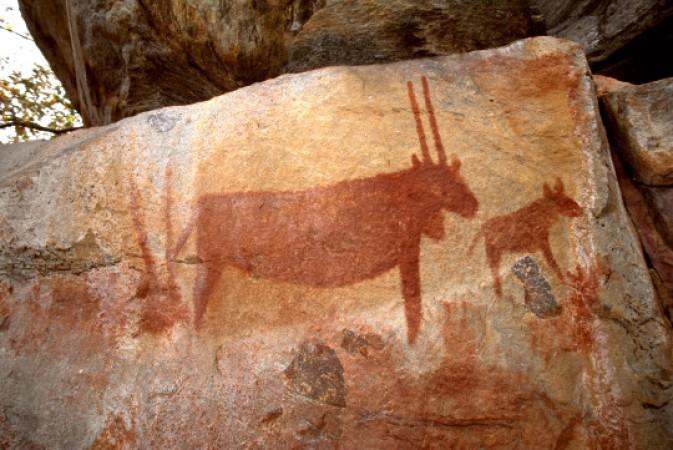
Ancient painting discovered at Tsodilo Hills - © African Rock Art - British Museum
Must-Try Dishes in Okavango Delta
While the Okavango Delta is renowned for its wildlife and natural beauty, the local cuisine offers visitors a flavorful glimpse into Botswana’s rich culinary traditions. These meals are rooted on simplicity and locally obtained ingredients, reflecting the region's culture and connection to nature.
- Seswaa: Botswana's national cuisine, Seswaa, is made of slow-cooked beef or goat meat. The meat is boiled with salt and water until tender, then pounded and served with pap (cornmeal porridge) or bogobe (sorghum porridge).
- Dikgobe: A filling and nutritious dish, Dikgobe is made from a combination of beans, peas, and maize. It is often served as a side dish, but can also be a main meal for vegetarians.
- Morogo: Morogo refers to wild African spinach, commonly sautéed with onions and tomatoes. This nutritious dish is a staple in Botswana and pairs perfectly with Seswaa or pap.
- Vetkoek: A popular street food throughout Botswana, Vetkoek is a deep-fried dough bun that is often filled with minced meat or served with syrup or jam for a sweeter version.
- Bogobe jwa Lerotse: This traditional dish is created from lerotse melon (a species of wild melon), which is boiled with sorghum grain to make a creamy porridge. It is commonly served alongside meaty meals.
- Madila: Madila is a fermented dairy food comparable to yogurt. It is commonly served as a snack or dessert and can be enjoyed alone or with bogobe. Its acidic taste is both delicious and nutritious.
- Braai (Barbecue): A braai is a social gathering and a popular recreation in Botswana, when foods such as cattle, lamb, chicken, and sometimes wildlife are barbecued over an open fire. The experience of sharing a meal with friends and family is important, not just the food.

Seswaa - © Cosmo Appliances
Festivals & Local Celebrations
The Okavango Delta and its surrounding areas are home to vibrant festivals and celebrations that offer visitors an authentic glimpse into the local culture and traditions. These festivals blend music, art, dance, and conservation efforts, reflecting the region's connection to nature and community life.
Okavango Delta Music Festival
Set in the heart of the Delta, this annual festival is a unique blend of music, nature, and conservation. It brings together local and international artists to perform in a setting that highlights Botswana’s pristine wilderness. The festival promotes eco-tourism, encouraging visitors to experience the Delta responsibly while enjoying genres like African jazz, traditional drumming, and contemporary fusion.
Domboshaba Festival
Although held in the northeastern part of Botswana, the Domboshaba Festival is a major cultural celebration that draws attendees from across the country. It celebrates the heritage of the Bakalanga people, featuring traditional dances, music, food, and storytelling. Held near the historic Domboshaba ruins, it also serves as a cultural preservation event, showcasing the region's rich history through performances and educational activities.
Kuru Dance Festival
This colorful festival brings together different San communities to showcase traditional dances, music, and rituals passed down through generations. The event is a rare opportunity for visitors to witness the unique heritage of one of Botswana’s oldest indigenous groups. The festival is deeply connected to the San’s spiritual relationship with nature, making it an enriching cultural experience.
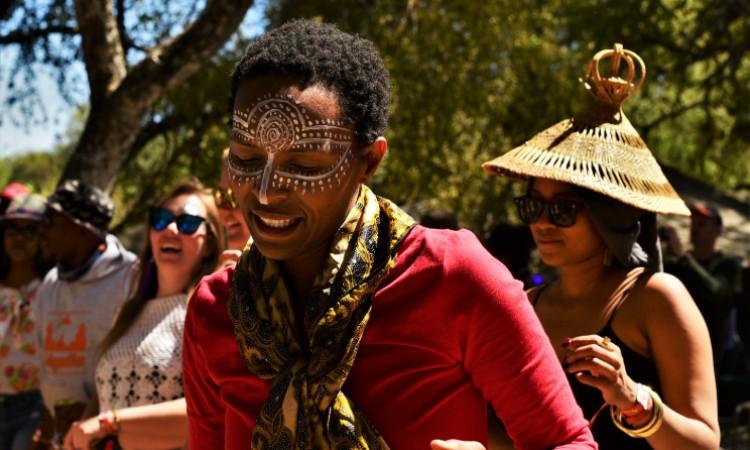
Okavango Delta Music Festival - © Music In Africa
What to Do in Okavango Delta
The Okavango Delta is renowned for offering some of the most exciting and immersive activities for nature and adventure lovers. From exploring its waterways to wildlife encounters, there’s no shortage of unforgettable experiences.
- Mokoro Rides: These traditional dugout canoes allow you to glide silently through the Delta’s narrow waterways, bringing you up close to the flora and fauna. A local poler will guide you through the reeds, where you can spot hippos, crocodiles, and an array of birds.
- Walking Safaris: For an intimate connection with nature, walking safaris offer the chance to explore the Delta on foot. Accompanied by expert guides, you’ll track animals, learn about the ecosystem, and discover hidden wonders of the bush.
- Birdwatching Tours: The Okavango Delta is a bird lover's heaven, with over 400 bird species found across the region that could satisfy your curiosity. Whether you’re on a boat safari or walking through the wetlands, you’ll have the opportunity to spot African fish eagles, kingfishers, and the elusive Pel's fishing owl.
- Game Drives: Game drives in the Okavango Delta are world-class. From open 4x4 vehicles, you can spot lions, elephants, leopards, and wild dogs. The Delta’s changing landscape—from floodplains to savannas—provides a diverse range of wildlife encounters.
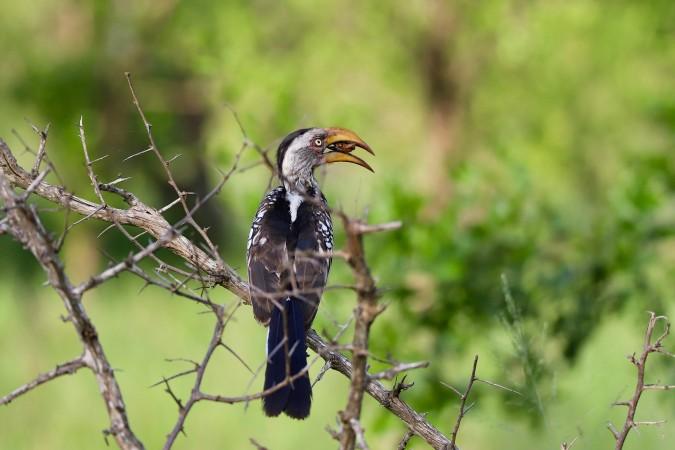
Yellow billed hornbill spotted during a Birdwatching tour - © Thapelo Letsholo
Shopping in Okavango Delta
Though the Okavango Delta is more famous for its natural beauty than bustling markets, there are still several places where visitors can find unique crafts and souvenirs that reflect Botswana’s rich culture.
- Maun Craft Market: Located in the gateway town of Maun, just outside the Okavango Delta, the Maun Craft Market is a great place to find handmade souvenirs. Local artisans sell traditional baskets, beadwork, and wood carvings that showcase the craftsmanship of Botswana’s communities.
- Bayei Village Shops: When visiting nearby Bayei villages in the Delta, you’ll come across stalls selling intricately woven baskets and handmade jewelry. These items are created by local women using traditional techniques passed down through generations.
- Thamalakane River Lodge: Situated along the Thamalakane River, this lodge offers a small craft shop that sells items like handwoven textiles, wildlife-themed carvings, and traditional clothing, making it a convenient stop for those staying at the lodge or nearby.
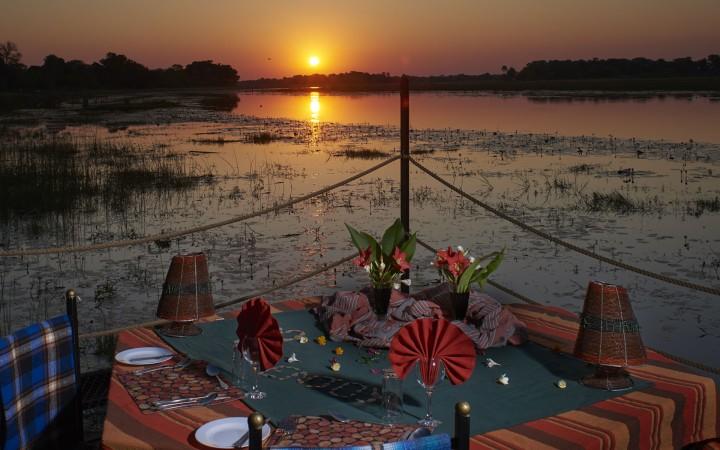
Thamalakane River Lodge - © Thamalakane River Lodge Official
Weather in Okavango Delta: Best Time to Visit
The weather in the Okavango Delta varies significantly throughout the year, impacting the best times to visit and the type of activities you can enjoy.
Dry Season in Okavango Delta
During the dry season, the Delta experiences cooler temperatures, with daytime highs ranging from 25°C to 35°C (77°F to 95°F). The weather is generally sunny and dry, making it ideal for game drives and mokoro safaris. This is also the best time for wildlife viewing since animals congregate near the remaining water sources, making them easier to spot.
Wet Season in Okavango Delta
The wet season brings higher temperatures, often exceeding 35°C (95°F), and frequent afternoon thunderstorms. Rainfall increases, and the Delta becomes lush and green. This is the time when the floodwaters from Angola fill the Delta, creating stunning waterways and attracting migratory birds. While some areas may become inaccessible due to high water levels, this period offers a unique opportunity to experience the Delta’s rejuvenated landscape and vibrant birdlife.
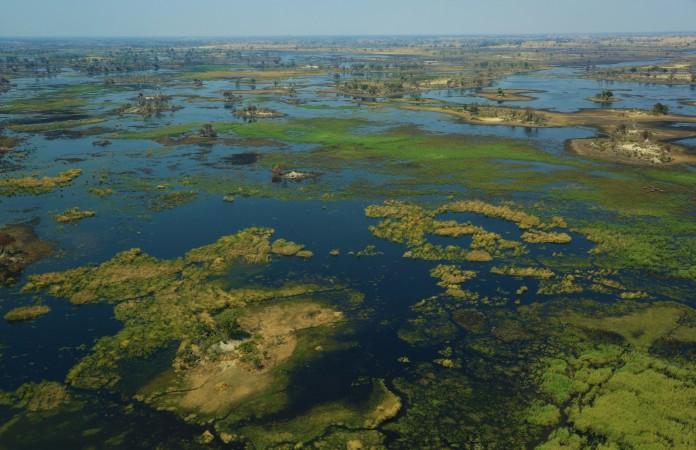
Wet Season in Okavango Delta - © Ulrico Zampa
Observe Wildlife Etiquette in Okavango Delta
When exploring the Okavango Delta, adhering to wildlife etiquette ensures a respectful and safe experience for both visitors and animals. By following these wildlife etiquette guidelines, you contribute to the conservation of the Okavango Delta and enhance your safari experience, allowing for a more immersive and respectful encounter with nature.
- Maintain a Safe Distance: Always keep a respectful distance from wildlife. Approaching too closely can stress animals and alter their natural behaviors. Use binoculars and telephoto lenses to get a closer look without intruding on their space.
- Follow Your Guide’s Instructions: Experienced guides understand wildlife behavior and safety practices. Listen carefully to their instructions and adhere to their guidelines to avoid disturbing the animals or putting yourself at risk.
- Avoid Feeding Wildlife: Feeding animals can alter their natural diet, behavior, and dependency on humans. It can also create dangerous situations, so never feed wildlife during your safaris.
- Respect Wildlife Trails: Stick to designated trails and paths during game drives and walking safaris. Off-trail excursions can damage the environment and disturb wildlife habitats. Your guide will ensure you stay on approved routes to minimize impact.
- Dispose of Waste Properly: Maintain the Delta's clean ecosystem by properly disposing of all rubbish. Use the supplied containers or carry your garbage with you. Littering may hurt wildlife and damage their environment.
- Avoid Flash Photography: Flash photography may scare animals and disturb their behavior. When shooting animals, utilize natural light and avoid using a flash to minimize disruption.
- Respect Seasonal Restrictions: Some areas may have seasonal restrictions to protect wildlife during sensitive times, such as breeding or migration. Be aware of and comply with any regulations or guidelines set by your guides or park authorities.
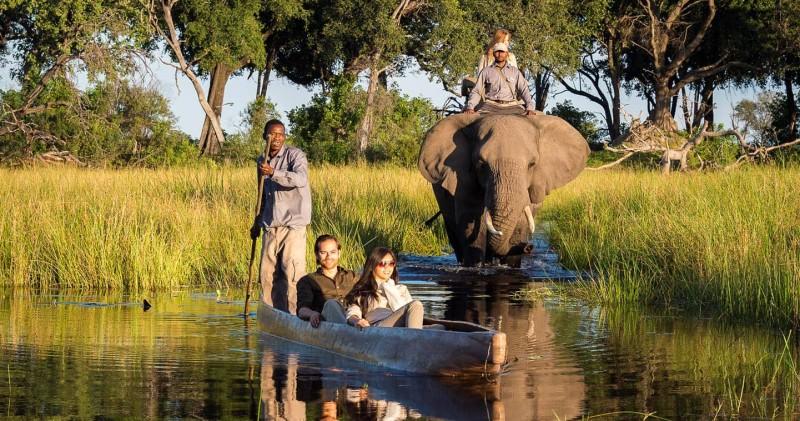
Experience the unique Okavango Delta safari - © Okavango Delta Official
Essential Travel Information
Getting Around Okavango Delta
- Mokoro (Dugout Canoe): The mokoro is the traditional form of transportation on the Delta's waterways. Guided by a local poler, this canoe provides a serene and intimate way to explore the Delta’s channels and floodplains, allowing you to get close to wildlife and enjoy the landscape.
- Game Drives: These vehicles are specially designed for off-road travel, providing a comfortable way to traverse the varied terrain and spot wildlife. Game drives are typically conducted early in the morning or late in the afternoon to maximize wildlife sightings.
- Light Aircraft: For those looking to cover more ground quickly, light aircraft transfers are available between lodges and camps. These flights offer breathtaking aerial views of the Delta and are a practical option for reaching remote areas.
- Walking Safaris: Some lodges and tour operators offer walking safaris, allowing visitors to explore the Delta on foot with experienced guides. This method provides a more immersive experience, letting you connect with the environment and observe smaller details often missed from a vehicle.
- Boat Cruises: Boat cruises on the Delta’s larger channels and rivers are another popular way to explore. These cruises offer a leisurely way to enjoy the scenery and wildlife, particularly birdwatching, while relaxing on the water.
ATM & Banking Services
Accessing banking services in the Okavango Delta requires some preparation, as facilities are limited in the remote areas. The town of Maun, the main gateway to the Delta, offers the most comprehensive banking options, including ATMs and currency exchange services. It is advisable to withdraw cash or exchange currency before heading into the Delta, as access to financial services becomes scarce once you are in the more remote parts of the region. For emergencies, some lodges may assist with cash advances or emergency banking services, though this is not guaranteed, so ensuring you have adequate cash for your stay is crucial.
Where to Stay in Okavango Delta
- Luxury Lodges: For those seeking a high-end experience, luxury lodges provide exclusive amenities, exceptional service, and stunning views. These lodges offer well-appointed suites, gourmet dining, and guided safaris, ensuring a premium experience in the Delta.
- Safari Camps: Safari camps provide a combination of comfort and excitement. These tented camps provide cozy accommodations, local cuisine, and guided activities, including game drives and walking safaris, creating a more immersive experience in the wilderness.
- Budget Lodgings: Budget-conscious travelers will find simpler lodges and campsites that offer basic amenities and comfortable stays at a more affordable price. These options provide a practical choice for those wanting to explore the Delta without the high costs.
Articles for you
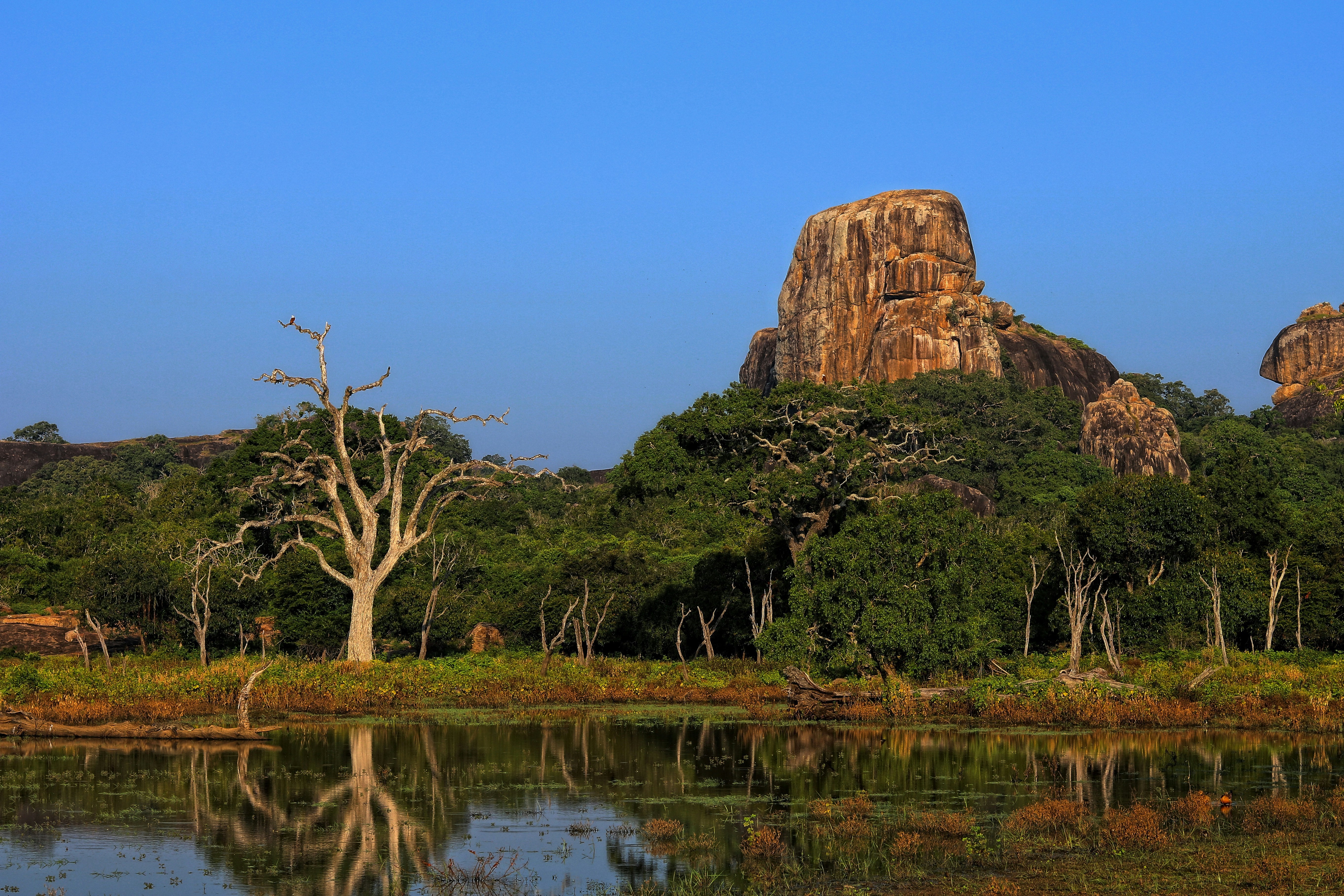
Explore Yala National Park - Sri Lanka Travel, Asia
Tucked away in Sri Lanka’s southeastern corner, Yala National Park is where wild nature meets deep tradition. Known worldwide for its leopard population, the park is also home to elephants, sloth bears, crocodiles, and hundreds of bird species. Beyond wildlife, Yala opens doors to a cultural landscape dotted with ancient temples, Buddhist ruins, and coastal villages. For travelers seeking more than just a safari, Yala offers a chance to explore eco-tourism, local communities, and sacred heritage sites.
Population: The Yala National Park area doesn’t have a human population.
Economy: The economy around Yala National Park thrives on a blend of eco-tourism, agriculture, and local services. Safari tours, eco-lodges, and cultural experiences drive steady income for nearby towns like Tissamaharama and Kataragama, supporting thousands of families.
Landmarks: Famous for Block I of Yala and wildlife encounters, including elephants, sloth bears, crocodiles, and exotic bird species.
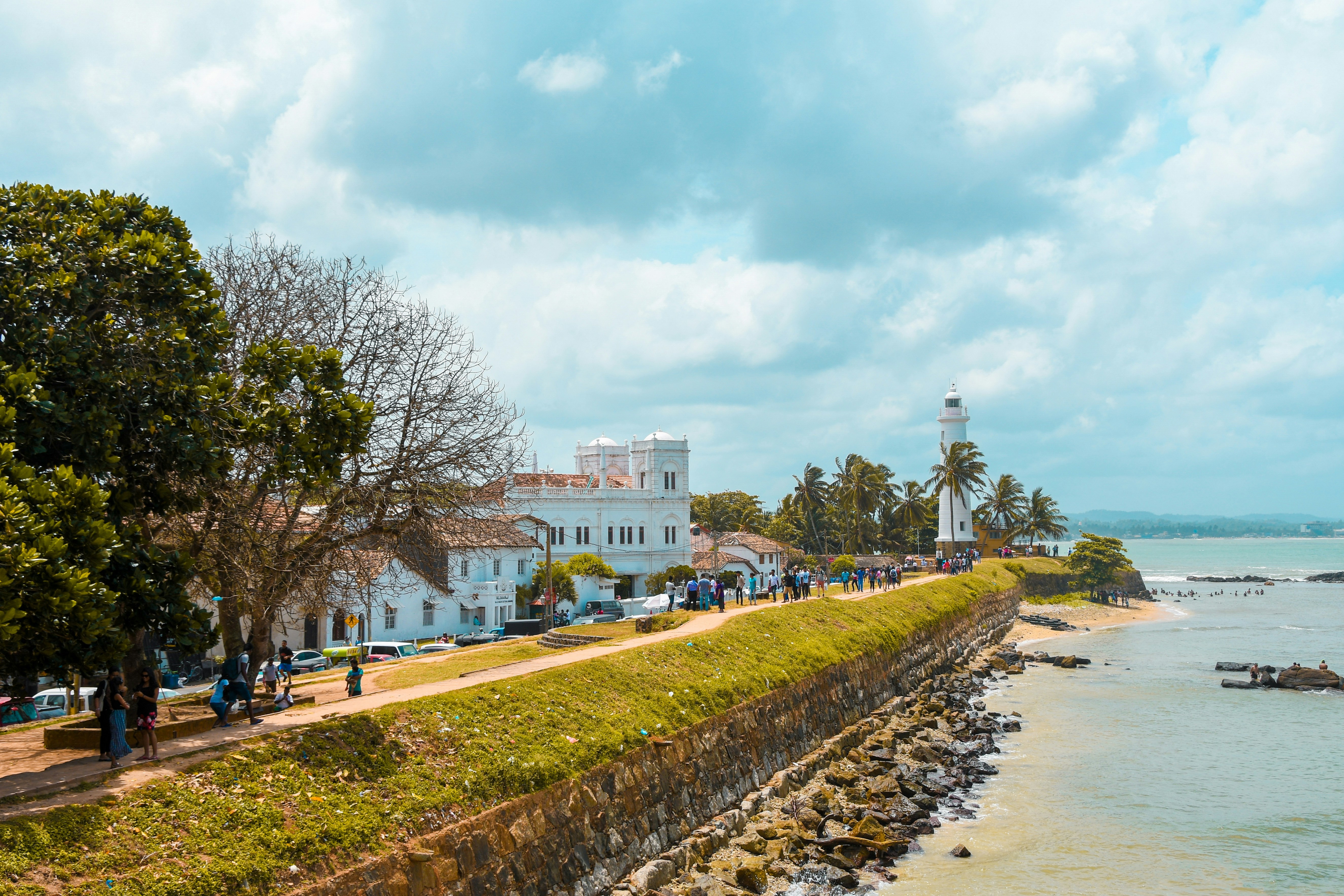
Explore Galle - Sri Lanka Travel, Asia
Nestled on Sri Lanka’s southern coastline, Galle is a vibrant city where history meets the sea. Its cobbled streets, colonial architecture, and serene beaches make it a must-visit destination for travelers seeking a blend of culture, adventure, and relaxation. A UNESCO World Heritage site, Galle captivates visitors with its Dutch Fort, bustling markets, and friendly locals. Whether you’re exploring the ramparts at sunset or savoring fresh seafood by the shore, Galle promises an unforgettable journey into Sri Lanka’s heritage.
Population: Approximately 113,000 in 2023.
Economy: Galle’s economy thrives on tourism, trade, and fisheries. The city’s historic fort, colonial architecture, and coastal charm draw thousands of international visitors each year, making tourism its main economic driver. Fishing remains vital for local livelihoods, supplying fresh seafood across the region.
Landmarks: Famous for the Galle Fort, Dutch Reformed Church & Maritime Museum, and Unawatuna Beach.
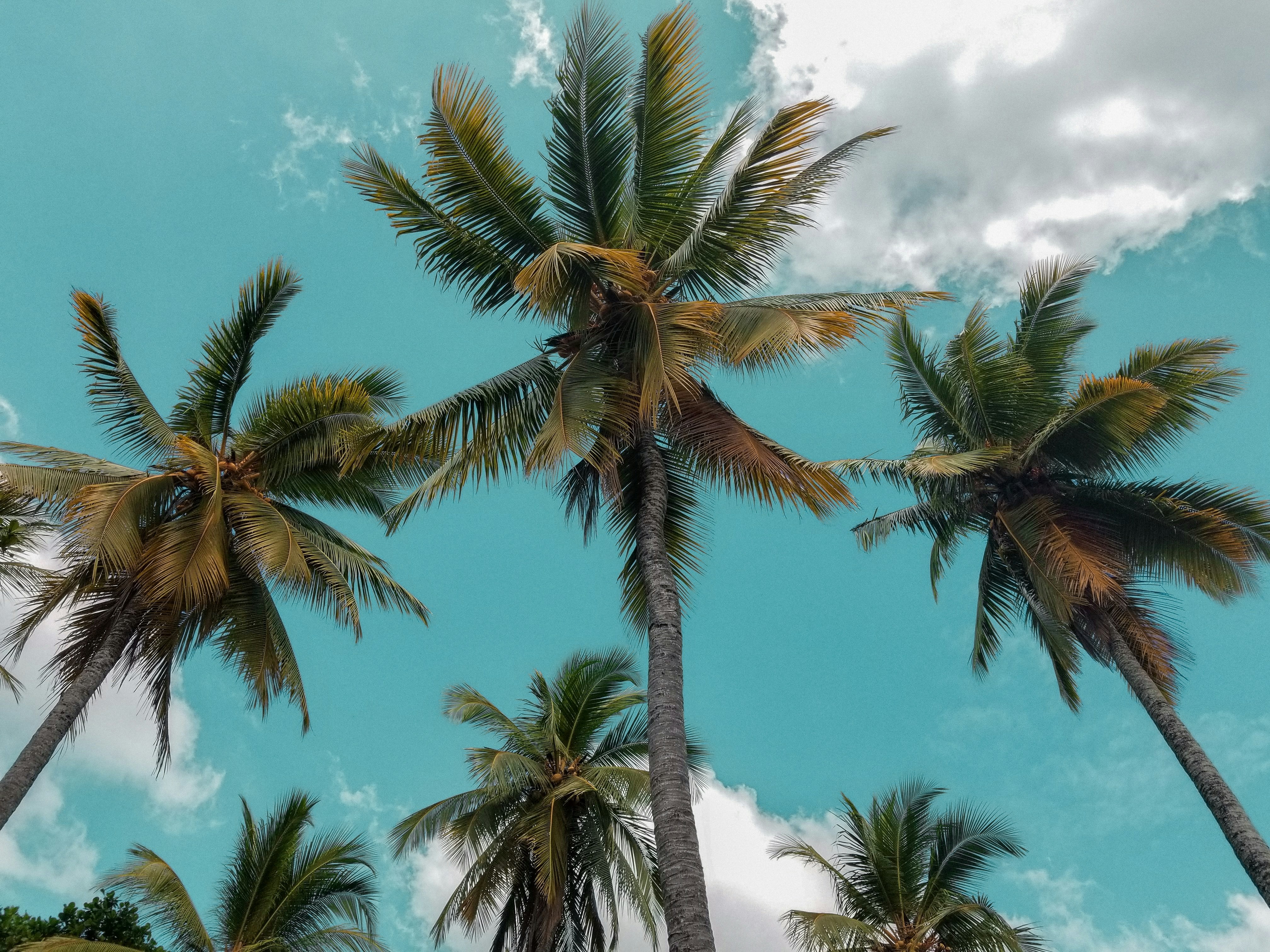
Explore Bentota - Sri Lanka Travel, Asia
Nestled along Sri Lanka’s southwestern coast, Bentota is a tropical paradise that blends golden beaches, vibrant culture, and thrilling adventures. Famous for its calm waters, luxury resorts, and scenic river estuary, Bentota has become a top destination for travelers seeking both relaxation and authentic experiences. From serene beach walks at sunrise to adrenaline-pumping water sports, this coastal town offers a perfect balance of leisure and exploration. With its proximity to Colombo and Galle, Bentota is easy to reach, making it an ideal stop for both short escapes and extended holidays.
Population: Approximately 37,000 in 2023.
Economy: Bentota’s economy thrives mainly on tourism, which drives local businesses such as hotels, restaurants, and wellness retreats. The town also benefits from fishing, coconut cultivation, and handicrafts like wood carving and batik textiles. Many residents rely on the growing demand for water sports and Ayurvedic treatments, making tourism the backbone of both income and employment in the area.
Landmarks: Famous for Bentota Beach, Bentota River Safari, and Kande Vihara Temple.
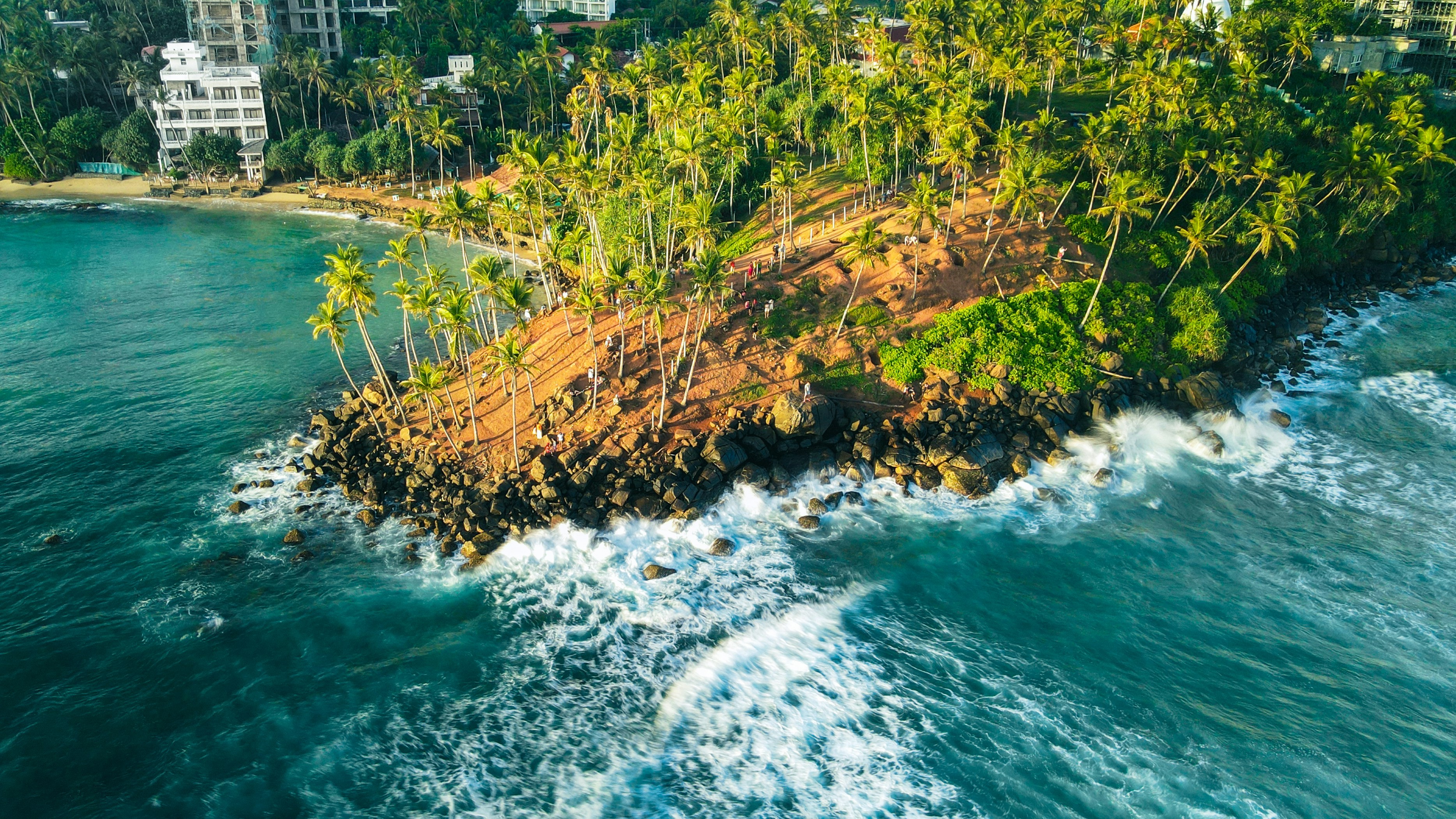
Explore Mirissa - Sri Lanka Travel, Asia
Mirissa is a charming coastal town on Sri Lanka’s southern shoreline. Known for its golden beaches, turquoise waters, and vibrant marine life, it has become a must-visit stop for travelers exploring the island. Many come for whale watching, surfing, and sunset views at Coconut Tree Hill, but Mirissa offers much more than postcard beauty. The fishing boats you see anchored by the bay carry generations of stories. Local traditions, delicious cuisine, and a laid-back rhythm of life shape every visitor’s experience.
Population: Approximately 4,700 in 2023.
Economy: Mirissa’s economy is largely shaped by its coastal location. Fishing has long been the backbone of local livelihoods, with generations relying on the Indian Ocean for income. In recent decades, tourism has become the main driver of growth, thanks to whale watching, surfing, and beachside hospitality.
Landmarks: Famous for Mirissa Beach, Coconut Tree Hill, and Parrot Rock Bridge.
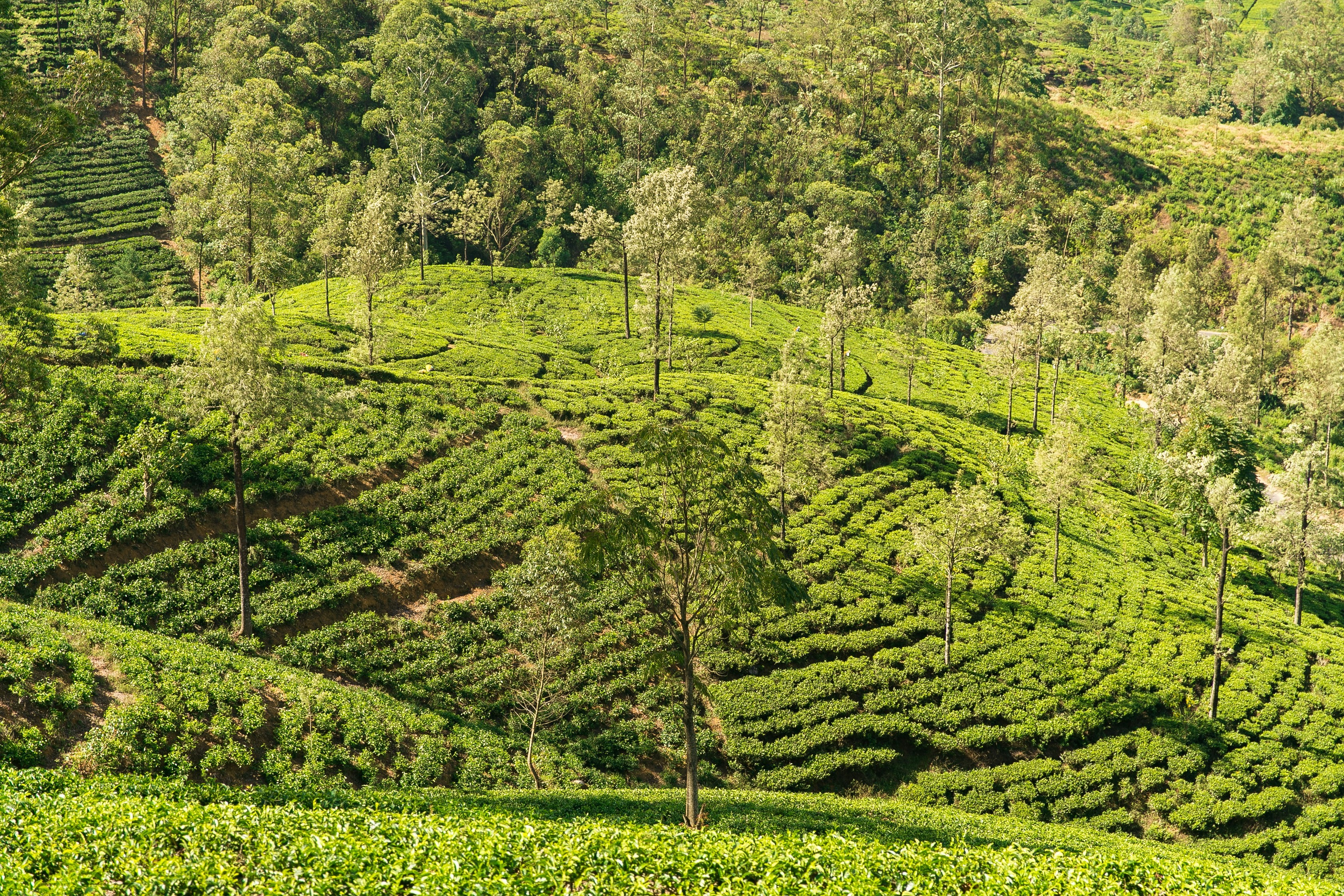
Explore Nuwara Eliya - Sri Lanka Travel, Asia
Tucked away in the Central Highlands of Sri Lanka, Nuwara Eliya is often called “Little England”. With its rolling tea plantations, cool misty mornings, and colonial charm, this mountain town feels like a step into another world. Travelers come here to breathe fresh air, walk through flower gardens, sip the finest Ceylon Tea, and enjoy a pace of life far from the island’s busy cities. Whether you’re drawn by scenic landscapes, heritage architecture, or the warmth of its people, Nuwara Eliya is a destination that blends nature, culture, and history in perfect harmony.
Population: Approximately 781,000 in 2023.
Economy: Nuwara Eliya’s economy thrives mainly on tea production, as it sits in the heart of Sri Lanka’s central highlands, famous worldwide for Ceylon Tea. The city also benefits from a growing tourism industry, attracting visitors with its colonial charm, cool climate, and scenic landscapes.
Landmarks: Famous for Gregory Lake, Hakgala Botanical Garden, and Victoria Park.
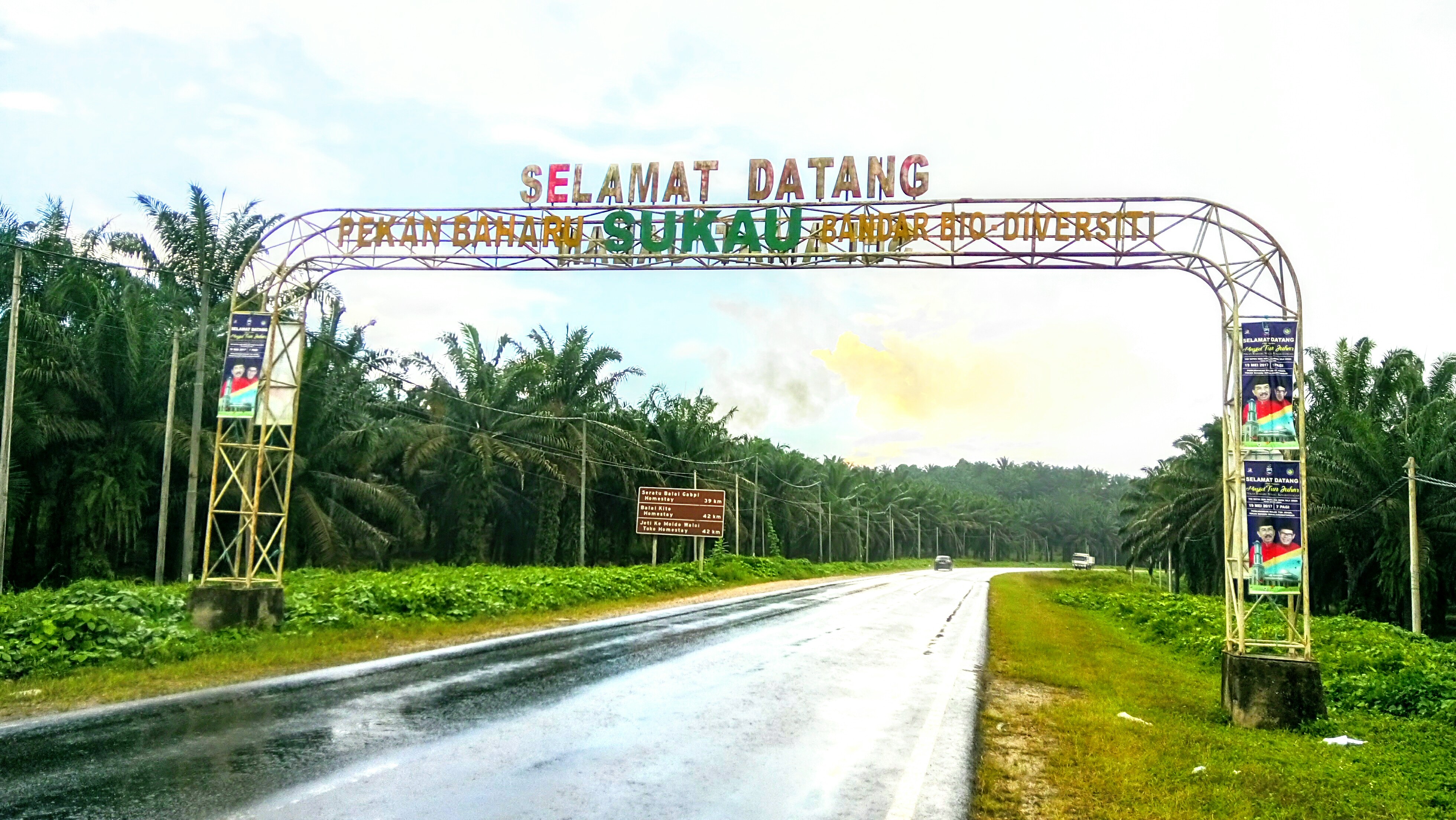
Explore Sukau - Malaysia Travel, Asia
Nestled on the banks of the Kinabatangan River in Sabah, Malaysian Borneo, Sukau is a destination where wildlife, culture, and conservation come together. Known as one of Asia’s top spots for river safaris and eco-tourism, this quiet village offers a front-row seat to encounters with Bornean orangutans, pygmy elephants, proboscis monkeys, and exotic birdlife.
Population: Approximately 1,400 in 2019.
Economy: Sukau’s economy is shaped by its riverine location and natural resources. Traditionally, the Orang Sungai community relied on fishing, small-scale farming, and forest gathering for their livelihood. Today, the village has shifted toward eco-tourism, with river cruises, jungle trekking, and homestays providing income.
Landmarks: Famous for the Kinabatangan River cruises, Gomantong Caves, and Ox-bow lakes and wetlands.
